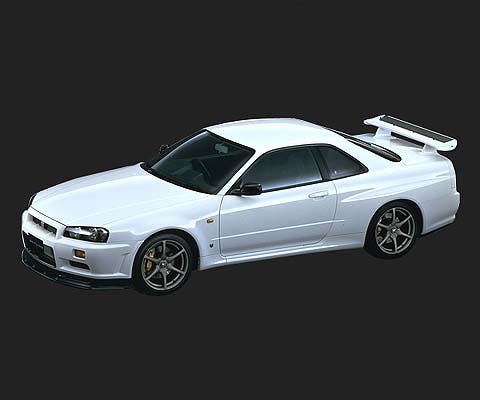NHTSA approves early import of two ultra-exclusive, race-bred GT-Rs

Two of Japan’s most forbidden fruit just became a little less forbidden. NHTSA recently approved two more versions of the R34-generation Skyline GT-R, the V-Spec N1 and V-Spec II N1, for early U.S. import (the standard timeline is 25 years after manufacture date) via the Show or Display rule. These two high-performance variants will join the V-Spec finished in Midnight Purple II and the M-Spec Nur.
Just 56 N1-spec R34s are confirmed to have been built, each with racing top of mind. Excess weight was shed by the removal of the stereo and air conditioning system (plus the addition of a distinctive, unpainted carbon-fiber hood on the V-Spec II) and the usage of the race-bred N1 variant of the twin-turbo, straight-six engine (RB26DETT). These specs are just a few ways of saying “this is a really special car,” a status NHTSA now formally recognizes. At a high level, Show or Display regulations specify that production must be no more than 500 vehicles and must be of historical or technological significance. Further regulations on usage of no more than 2500 miles per year apply, and each vehicle coming in must seek individual approval for the exemption before they will be allowed into the country.

According to GTR-Registry, it took 3 years and a 96-page application to finally add these cars to the list, all thanks to an absolute legend of a Skyline owner: Brook Willard, who owns an R34 V-Spec N1 built by fabled Japanese tuning house Mine’s. Addition to the Show or Display approved list means that his car—and others like it—no longer have to wait until 2024 to drive on U.S. streets.
This news doesn’t open the floodgates for R34s; it simply means that two more very special (and very rare) versions of one of the JDM world’s greatest machines are approved to enter the U.S. With prices of more common R34s now reliably in the six figures, it wouldn’t be surprising at all if these hallowed, race-bred variants were trading in the high sixes or low seven figure range—even before news broke of their qualification for the Show or Display exemption. With the light now green, the broadened audience could very well push them higher.


So basically they get limited use for about less 2 years, after that can they become regular 25-year cars without restrictions?